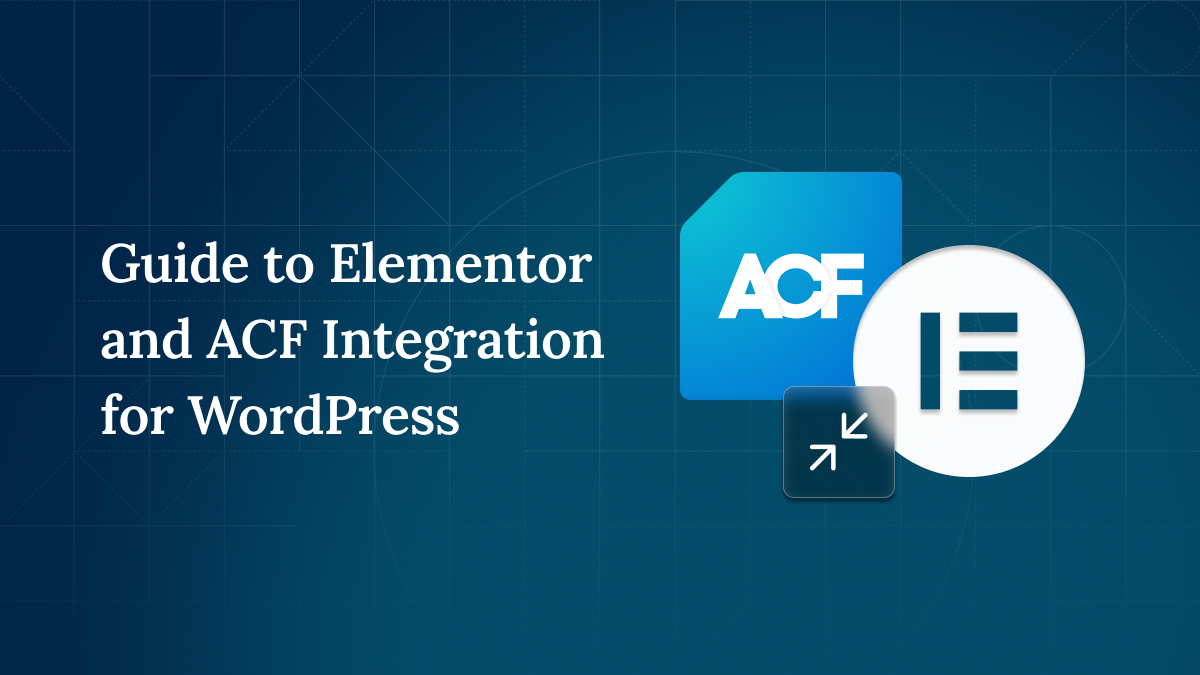Introduction
A dynamic blog layout enhances user engagement by allowing flexible, customizable designs without heavy coding. By combining Elementor Pro (for drag-and-drop design) and Advanced Custom Fields (ACF) (for structured data), you can create unique blog templates that stand out. Lets dive into Building a dynamic blog layout with elementor & acf (advanced custom fields)
In this guide, you’ll learn how to:
✔ Set up custom fields with ACF
✔ Design a dynamic single post template in Elementor
✔ Display ACF fields dynamically
✔ Optimize for performance and SEO
Let’s dive in!
Why Use Elementor & ACF for Blog Layouts?
Elementor Pro Benefits:
- Drag-and-drop builder – No coding required.
- Dynamic content – Pull data from custom fields.
- Theme Builder – Customize single posts, archives, and more.
ACF Benefits:
- Custom fields – Add extra data (e.g., subtitles, read time, author bios).
- Flexible content – Create repeatable layouts (e.g., FAQs, galleries).
- Better organization – Structure post metadata efficiently.
Together, they unlock endless design possibilities.
Prerequisites
Before starting, ensure you have:
✅ WordPress installed
✅ Elementor Pro (for dynamic features)
✅ ACF Pro (or free version with limited fields)
Step 1: Set Up Custom Fields with ACF
- Install & activate Advanced Custom Fields.
- Go to Custom Fields → Add New.
- Create a field group (e.g., “Blog Post Extras”).
- Add fields like:
- Subtitle (Text Field)
- Estimated Read Time (Number Field)
- Featured Image Alt Text (Text Area)
- Set location rules to “Post Type == Post”.
- Save and publish.
Now, these fields will appear in the WordPress editor.
Step 2: Design the Layout in Elementor
- Go to Templates → Theme Builder in Elementor.
- Click Add New → Single Post.
- Design your template using:
- Dynamic Post Title
- Featured Image
- Post Content Widget
- Add ACF fields dynamically:
- Drag in a Text Widget.
- Click the Dynamic Tag icon (⚡).
- Select ACF Field → Choose your field (e.g., “Subtitle”).
- Style with Elementor’s typography, spacing, and color controls.
Step 3: Make It Dynamic (Display ACF Data)
To show custom fields conditionally:
- Use Dynamic Visibility (via JetEngine or third-party plugins).
- Or add PHP snippets (for developers):

Step 4: Create a Custom Blog Archive (Optional)
For a dynamic blog grid:
- Design a Posts Widget in Elementor.
- Under Query, filter posts by ACF fields (e.g., “Featured Posts”).
- Style the grid with hover effects, custom excerpts, and ACF data.
Pro Tips for Performance & SEO
- Optimize images used in ACF fields.
- Cache dynamic content (WP Rocket, LiteSpeed).
- Test mobile responsiveness in Elementor.
- Use semantic HTML (proper heading hierarchy).
Conclusion
By combining Elementor and ACF, you can build a fully dynamic blog layout without heavy coding. Experiment with different ACF fields (testimonials, related posts, multimedia embeds) to create engaging designs.
Need help? Check out:
Subscribe to our newsletter


